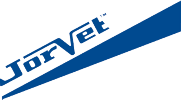CLINICAL STUDIES USE OF REBOUND TONOMETRY AS A DIAGNOSTIC TOOL TO DIAGNOSE GLAUCOMA IN THE CAPTIVE CALIFORNIA SEA LION Johanna C. Mejia; Elizabeth M. Hoffman; Carmen M.H. Colitz; Skip W. Jack; Lora Ballweber; Maya Rodriguez; Michael S. Renner; Todd Schmitt; Leslie M. Dalton; Steve Osborn; Scott A. Gearhart; Lara A. Croft; Christopher Dold; Allison D. Tuttle; Tracy A. Romano; Connie L. Clemons-Chevis Mississippi State University College of Veterinary Medicine, Mississippi State, MS, USA; Miami Seaquarium, Miami, FL, USA; CPT, Veterinary Corps, US Army, U.S. Navy Marine Mammal Program, SPAWAR Systems Center, San Diego, CA, USA; Aquatic Animal Eye Care, Jupiter, FL, USA; Animal Eye Specialty Clinic, West Palm Beach, FL, USA; Colorado State University College of Veterinary Medicine, Fort Collins, CO, USA; Seaworld California, San Diego, CA, USA; Seaworld Texas, San Antonio, TX, USA; Seaworld Florida, Orlando, FL, USA; Mystic Aquarium and Institute for Exploration, Mystic, CT, USA; Institute for Marine Mammal Studies, Gulfport, MS, USA PURPOSE One of the most common medical problems seen in the California sea lion (Zalophus californianus) is ocular disease. Glaucoma is a disease that has not been evaluated extensively in the sea lion. Observing clinical signs and measuring intraocular pressures (IOP) is critical for early diagnosis. The objective of this project is to measure IOP in clinically normal captive sea lions without ocular pathology to establish a normal range. METHODS The TONOVET (Webster Veterinary) was selected to be used in the study. The TONOVET uses a new non-invasive, rebound method to estimate IOP. An electrical magnetic tonometer probe comes into contact with and rebounds from the corneal surface to estimate an IOP. In order to record an accurate IOP, six measurements were taken and averaged resulting with the mean value. A complete ophthalmic examination has been performed on all sea lions by a veterinary ophthalmologist. RESULTS Currently, there are twenty sea lions in the study with no clinical ocular pathology. Overall mean in 39 healthy eyes was 32.8 mmHg with a SD +/- 3.2 at a 95% CI of 26.4 to 39.1. CONCLUSION We have established a normal baseline range for IOP values in captive sea lions without ocular pathology. This range is higher than the generally accepted range using other tonometers (e.g., Tono-Pen Vet). This is likely due to the increased thickness of the pinniped cornea as well as the different mechanism of the instrument itself. This range will provide a comparative measurement when evaluating a diseased eye. By measuring the IOP regularly in juvenile sea lions, veterinarians will be able to determine when IOP’s. © 2009, International Association for Aquatic Animal Medicine 32 WWW.ICARETONOMETER.COM
TONOVET DNA Clinical Studies, Articles, Testimonials Literature – LITJ1000-4
| Title Name |
Pages |
Delete |
Url |
| Empty |
AI Assistant
Ask anything about this document
 AI is thinking…
AI is thinking…
Ai generated response may be inaccurate.
Search Text Block
Page #page_num
#doc_title
Hi $receivername|$receiveremail,
$sendername|$senderemail wrote these comments for you:
$message
$sendername|$senderemail would like for you to view the following digital edition.
Please click on the page below to be directed to the digital edition:
$thumbnail$pagenum
$link$pagenum
Your form submission was a success.
Downloading PDF
0% - Preparing download...
Downloading PDF
Generating your PDF, please wait...
This process might take longer please wait



